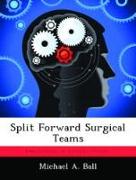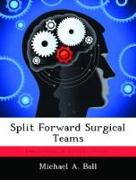Split Forward Surgical Teams
BücherAngebote / Angebote:
In the last 20 years, the Army's Field and Combat Support Hospitals have found it difficult to deploy rapidly and to keep pace with maneuver forces. The Forward Surgical Team (FST) was the bridge for this gap in capabilities. Until recently, the FST had not been deployed and utilized in combat. With the recent conflicts in Afghanistan and Iraq, FSTs have been extensively utilized. Using the data and experiences from these conflicts, should updates to the doctrine be made? One unexpected outcome from these conflicts was the use of split FSTs in Afghanistan. Using the data from evacuation logs from Afghanistan, the Joint Trauma Center, and the recent experiences of FST staffs the effectiveness of split FSTs was investigated based on the Died of Wounds (DOW) rate and evacuation times. Additionally the personnel, Doctrinal employment, and equipment were investigated to determine if significant changes were needed to employ split FSTs or what would prevent split FSTs being written into doctrine? From the data collected, split FSTs had DOW rates that were lower than the DOW rate at the end of Vietnam, which is considered the standard. As such, the split FSTs in Afghanistan were determined to be effective and the doctrine could be changed with minimal additional cost in equipment. The split FST would give commanders another option to employ FSTs with the risks having been already studied. The benefits of the split FST would be the ability to serve wider areas of coverage with limited resources and possibly the ability to get surgical units on the ground earlier in entry operations due to having smaller transportation requirements.
Folgt in ca. 15 Arbeitstagen

